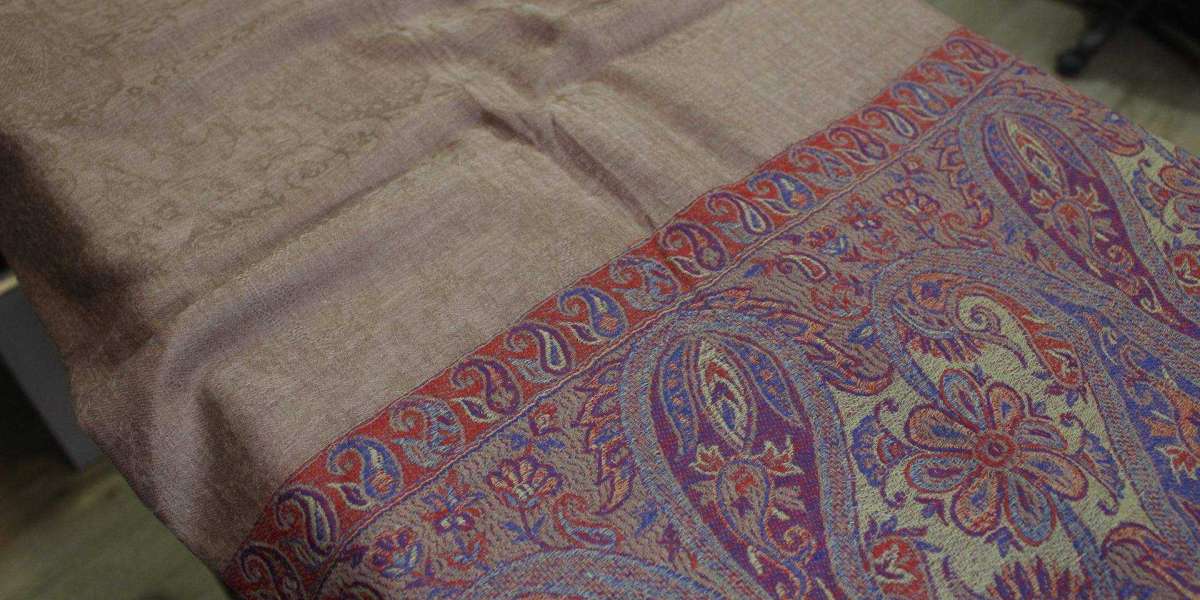In the world of luxury textiles, there exists a timeless treasure that embodies craftsmanship, opulence, and heritage – the Handmade Shahtoosh Shawls. Originating from the valley of Kashmir, these exquisite shawls have adorned royalty and connoisseurs alike for centuries. In this exploration, we delve into the fascinating world of Shahtoosh, tracing its history, the intricate art of crafting, and the ethical concerns surrounding its production.
1. Historical Tapestry: The roots of Shahtoosh can be traced back to ancient times, where the art of weaving and handcrafting reached unparalleled heights in the Kashmir Valley. The word 'Shahtoosh' itself is a testament to its royal connections, with 'Shah' meaning 'king' and 'toosh' referring to 'wool.' Reserved exclusively for royalty, these shawls were often passed down as prized possessions through generations, symbolizing status, wealth, and refinement.
2. Crafting Elegance: At the heart of Shahtoosh shawl creation lies an intricate and labor-intensive process. The raw material used is the ultra-fine fleece of the Tibetan Antelope, also known as the Chiru. This rare and endangered species inhabits the harsh plateaus of the Tibetan plateau. The wool is so fine that it takes the fleece of at least three to five Chirus to create a single shawl.
The weaving process involves skilled artisans who meticulously hand-spin the delicate fibers, creating an incredibly lightweight and soft fabric. The shawls are then hand-embroidered with intricate patterns, often inspired by nature, Persian designs, or geometric motifs. The craftsmanship involved in the creation of a single Shahtoosh shawl can take months, reflecting the dedication and skill of the artisans.
3. Ethical Concerns: Despite the allure of Shahtoosh shawls, ethical concerns have cast a shadow over their production. The Tibetan Antelope, the source of Shahtoosh wool, is classified as an endangered species, making the trade and possession of its wool illegal under international law. The Convention on International Trade in Endangered Species of Wild Fauna and Flora (CITES) strictly prohibits the trade of Shahtoosh wool.
Unscrupulous practices, including poaching and illegal trafficking, have led to a significant decline in the Chiru population. Efforts to conserve and protect these animals are ongoing, but the allure of Shahtoosh continues to fuel an illicit trade that threatens the very existence of this majestic species.
4. Sustainable Alternatives: In response to the ethical concerns surrounding Shahtoosh, the fashion industry has witnessed a growing trend towards sustainable and ethical alternatives. Designers and artisans are exploring cruelty-free and eco-friendly materials to create luxurious shawls that mirror the elegance of Shahtoosh without contributing to the harm of endangered species.
Pashmina, for instance, has emerged as a popular substitute for Shahtoosh. Derived from the soft undercoat of the Himalayan goat, Pashmina offers a similar level of softness and warmth without the ethical dilemmas associated with Shahtoosh. Additionally, advancements in technology have paved the way for synthetic fibers that replicate the texture and appearance of traditional Shahtoosh, providing consumers with guilt-free alternatives.
5. Preserving Heritage: While the ethical concerns surrounding Shahtoosh are undeniably critical, there is a concerted effort among artisans, conservationists, and fashion enthusiasts to preserve the rich heritage associated with these shawls. Cultural organizations and governments are working together to promote sustainable practices, discourage illegal trade, and raise awareness about the consequences of supporting the Shahtoosh industry.
Preserving the heritage also involves supporting the livelihoods of skilled artisans who have dedicated their lives to the art of Shahtoosh craftsmanship. Initiatives aimed at providing fair wages, ethical working conditions, and promoting traditional handcrafting techniques contribute to the sustainable preservation of this cultural legacy.
6. The Global Appeal: In the modern world, the allure of Handmade Shahtoosh Shawls has transcended cultural boundaries, becoming a symbol of luxury and sophistication. Renowned fashion houses and designers around the globe have incorporated Shahtoosh-inspired designs into their collections, paying homage to the timeless beauty of this traditional craft.
Celebrities and fashion enthusiasts alike have embraced the elegance of Shahtoosh, making it a coveted accessory for special occasions and red-carpet events. The global appeal of these shawls highlights their versatility, as they effortlessly complement both traditional and contemporary attire.
7. Conclusion: In conclusion, Handmade Shahtoosh Shawls stand as a testament to the enduring allure of traditional craftsmanship and the timeless elegance of luxury textiles. While the ethical concerns surrounding the production of Shahtoosh are undeniable, efforts to promote sustainable alternatives and preserve the cultural heritage associated with these shawls are crucial.
As consumers, embracing ethical choices and supporting initiatives that prioritize conservation and fair practices can contribute to the safeguarding of both the exquisite artistry and the delicate ecosystems intertwined with the legacy of Shahtoosh. In doing so, we can ensure that the beauty of Handmade Shahtoosh Shawls continues to weave a rich tapestry that transcends generations, cultures, and ethical dilemmas.


